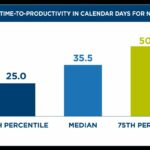Unveiling the Veiled Triumph: Unraveling the Secrets Behind Outplacement Program Success
Amidst the turbulence of an ever-evolving employment landscape, organizations are increasingly recognizing the pivotal role of outplacement programs in shaping an individual’s professional future. From nurturing optimism in times of uncertainty to providing a springboard for new opportunities, these programs guide employees through the labyrinth of career transitions. However, one burning question remains: how can the undeniable triumph of an outplacement program be quantified and measured? Striking the perfect balance between art and science, metrics and key performance indicators (KPIs) emerge as the intrepid instruments of success for these enigmatic endeavors. Join us as we embark on an exploratory journey, peering into the intricate world of measuring the success of outplacement programs, where creativity meets objectivity, and the veil of uncertainty is lifted.
1. Unlocking the Hidden Potential: Evaluating the Impact of Outplacement Programs through Strategic Metrics
When it comes to outplacement programs, evaluating their impact can be a challenging task. Companies often invest a significant amount of resources into these programs, aiming to help displaced employees transition smoothly into new careers. However, without a clear understanding of the metrics and indicators that determine success, their true value remains hidden. This post sheds light on the effectiveness of outplacement programs by examining key strategic metrics that can measure their impact.
To evaluate the impact of outplacement programs, it is essential to consider various strategic metrics. By assessing these indicators, organizations can gauge the effectiveness of their programs and make data-driven decisions to enhance them. Some key metrics to evaluate include:
- Job Placement Rate: This metric helps determine the percentage of displaced employees who successfully land new positions after participating in an outplacement program. A higher job placement rate indicates program effectiveness in helping individuals secure employment opportunities.
- Time to Reemployment: This metric measures how long it takes for displaced workers to find new jobs. A shorter time to reemployment signifies that outplacement programs effectively assist in accelerating the job search process.
- Job Satisfaction: Evaluating the satisfaction levels of employees who have gone through outplacement programs provides insights into the quality of support and resources provided. Higher job satisfaction indicates that the program has successfully assisted individuals in finding fulfilling career opportunities.
2. Navigating the Path to Success: Key Performance Indicators for Assessing Outplacement Program effectiveness
In today’s rapidly changing job market, assessing the effectiveness of outplacement programs has become paramount for individuals and organizations alike. By utilizing key performance indicators (KPIs), one can navigate the path to success and ensure that these programs are delivering desired outcomes. Let’s delve into a few crucial KPIs that help in measuring the effectiveness of outplacement programs:
- Placement Rate: This KPI focuses on the percentage of participants who successfully secure new employment within a specified period. A higher placement rate indicates the program’s ability to connect displaced workers with suitable job opportunities.
- Retention Rate: Measuring the longevity of the placements, this KPI assesses the percentage of individuals who remain employed after a certain duration. A higher retention rate suggests the program’s effectiveness in guiding individuals towards sustainable and long-term employment.
- Participant Satisfaction: Gauging participants’ contentment with the program’s support, this KPI measures their satisfaction levels through surveys or feedback. Positive feedback indicates a well-rounded program that addresses individuals’ needs during their career transition.
These KPIs, among others, assist in evaluating the effectiveness of outplacement programs and provide valuable insights for program refinement. Organizations and individuals can align their goals and strategies by leveraging these measurements to ensure a successful journey towards new beginnings in the workforce.
3. Beyond Job Placement: Unveiling Comprehensive Metrics for Measuring the True Value of Outplacement Programs
When evaluating the success of outplacement programs, job placement alone does not paint a complete picture of their true value. To truly understand the impact these programs can make, a comprehensive set of metrics needs to be considered. By going beyond job placement and uncovering deeper insights, organizations can gain a more accurate understanding of the effectiveness of their outplacement initiatives.
So, what other metrics should be considered when evaluating the true value of outplacement programs? Here are some key factors to take into account:
- Retention rates: Look beyond job placement and assess the long-term success of individuals who have completed outplacement programs. Are they able to maintain employment and stay with the new company in the long run?
- Salary growth: Measure the increase in salary or earning potential for individuals who have participated in outplacement programs. This metric can indicate the program’s ability to help individuals secure better employment opportunities.
- Job satisfaction: is participating in an outplacement program leading to increased job satisfaction for individuals? Evaluate their feedback and assess whether they are happier and more fulfilled in their new roles.
By utilizing these comprehensive metrics, organizations can gain a deeper understanding of the true value that outplacement programs bring to both individuals and the company as a whole.
4. Exposing Success: How to Leverage Data and KPIs to Evaluate the Efficacy of Outplacement Services
When it comes to evaluating the effectiveness of outplacement services, data and Key Performance Indicators (KPIs) are crucial tools for gaining insights and making informed decisions. By harnessing the power of data, organizations can expose the true impact of their outplacement programs and make necessary adjustments to ensure the success of transitioning employees.
One of the key benefits of leveraging data in evaluating outplacement services is the ability to track and measure the progress and outcomes of individual employees. By analyzing data points such as job placement rates, time to reemployment, and employee satisfaction surveys, organizations can gain a comprehensive understanding of the effectiveness of their program. This data-driven approach not only enables organizations to identify areas of improvement but also provides concrete evidence of the value delivered to both employees and stakeholders.
- Utilize advanced analytics tools to track and measure key milestones throughout the outplacement process, such as resume creation, job application submissions, and interview requests.
- Implement employee surveys and feedback mechanisms to gauge satisfaction levels and identify areas of improvement for the outplacement program.
- Compare and benchmark data against industry standards and competitors to gain a broader perspective and identify potential areas for growth and innovation.
By proactively leveraging data and KPIs, organizations can evaluate the efficacy of their outplacement services, make data-driven decisions, and continuously improve their offerings to drive success for transitioning employees.
As we conclude this journey into the realm of outplacement programs, we find ourselves armed with a newfound appreciation for the power of metrics and KPIs. The extensive exploration of measuring success has taught us that the value of these programs extends far beyond mere numbers on a spreadsheet.
Like a painter skillfully crafting a masterpiece, businesses need to carefully choose the brushstrokes that will ultimately complete their canvases. In this analogy, outplacement programs serve as the gentle strokes that breathe life into the professional trajectories of those impacted by organizational change.
With metrics as our compass, we can navigate the turbulent sea of emotions that job seekers encounter during their transition period. We can measure the success of these programs not merely through job placements, but through the restoration of hope, confidence, and self-worth. Every successful reintegration, every new opportunity seized, adds a vibrant hue to the canvas of human potential.
But let us not forget, dear readers, that the true essence of measuring success lies not solely in the quantifiable, but in the transformational. It is in the stories of individuals who, against all odds, found their footing and spread their wings anew. It is in the moments of resilience, growth, and reinvention.
These outplacement programs offer a ray of light in times of darkness, offering guidance to those navigating uncharted waters. Like a lighthouse, they stand tall, illuminating the path towards a brighter future. And just as a lighthouse relies on a steady stream of metrics to gauge its effectiveness, so too do outplacement programs lean on carefully crafted KPIs to shape their impact.
As we bid farewell to this exploration, let us remember that it is not enough to simply measure success – we must strive to redefine it. By intertwining compassion, expertise, and meticulous tracking, we can transcend the conventional boundaries of metrics and witness the alchemy that unfolds within these programs.
Let us continue this endeavor, ever vigilant in our pursuit of growth and support for job seekers. Together, we will measure success not only in numerical triumphs but in the stories of perseverance, empowerment, and triumph that emerge from the shadows. So, go forth, armed with metrics, and illuminate the path for those seeking their next chapter.









